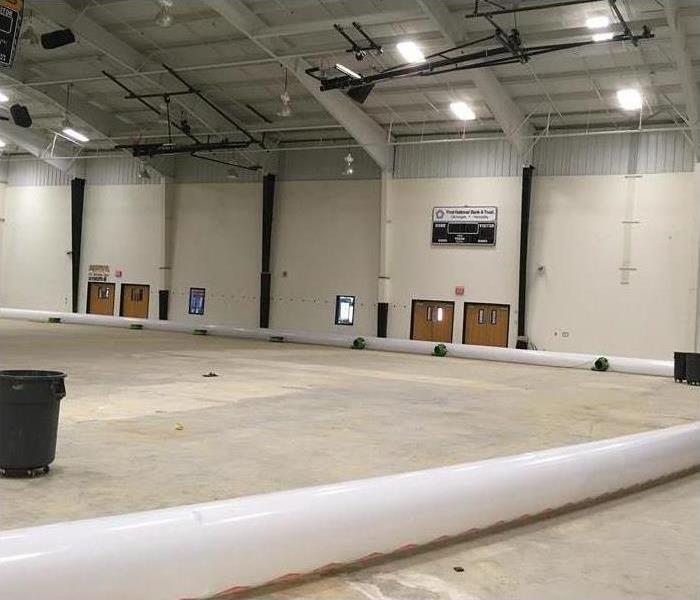What does the process for water cleanup involve?
11/14/2024 (Permalink)
 You're probably familiar with the idea of cleaning up after a spill, but did you know that water cleanup can be a complex process?
You're probably familiar with the idea of cleaning up after a spill, but did you know that water cleanup can be a complex process?
Water cleanup is one of the most common types of restoration services in the country. We see it every day, and we understand what goes into it. But for you, as a homeowner, water damage can be quite confusing. Where does the water come from? What does it look like? What does it do to your home?
We're here to help! In this blog post, we'll go over some of the basics of how a water cleanup company works: identifying where the source of the leak is coming from, assessing the damage caused by said water source, drying out your home properly so mold doesn't grow...you get it! By reading this article you'll be able to better understand what goes on during a typical water cleanup process so that if/when disaster strikes again, you'll know exactly what steps need to be taken immediately so that things don't get worse in the long run.
Step 1: Determine the source of the water
After you've noticed a water leak in your home or business, the first step is to determine exactly where the water is coming from. You can do this by checking for leaks or plumbing issues, roof or ceiling damage, and water damage on the ground and walls. Shutting off the water supply is important to prevent any more water from leaking out onto your property.
Step 2: Damage assessment
In step 2, you'll want to determine if the damage is from a burst pipe, flooding, or a leak. This will help you assess what kind of repairs need to be made and how much time and money it will take for your home to be restored.
It's also important to check for structural damage: Are there cracks in walls or ceilings? Is there water damage on the ceiling? If so, this could indicate that structural repairs are needed.
You should also inspect all electrical systems in your house for signs of damage as well as appliances such as refrigerators, dishwashers, washing machines, and dryers. These can experience significant financial loss due to water infiltration over time if not properly maintained during regular service intervals. You may also want to consider hiring an electrician if any wiring has been exposed due to the flooding event since they'll know exactly how much rewiring needs to be done before allowing yourself back into your home.
Step 3: Water extraction and dry out
The process of water extraction and dry out is the third step before you can start reconstructing your home, and it's essential to your safety. After you've removed as much standing water as possible, a professional will come in to remove any wet insulation, replace it with new insulation, and use fans and dehumidifiers to dry out the area as much as possible.
Step 4: Remove affected materials
Once you've removed as much of the water as possible, it's time to focus on removing any affected materials.
Here are some things you'll want to consider:
Remove damaged materials. This includes damaged carpeting, insulation, drywall, and furniture. For example, if the water is only in the kitchen and not the rest of your home then you may want to keep those rooms intact but rip out all of your sopping wet cabinets and countertops from that room. It can be overwhelming at first glance but this is a good time for an extra set of hands or two!
Remove moldy materials. As soon as possible after removing wet materials from your home or apartment (or office), throw away anything that was touched directly by water—including bookshelves full of books (yes).
Step 5: Drying and dehumidification
Drying out your property after a water loss is a crucial part of the cleanup process. This step includes using fans to circulate air, heaters to warm up the air, dehumidifiers and air purifiers to remove mold and mildew, and dehumidifiers and air purifiers to remove bacteria.
You're probably familiar with the idea of cleaning up after a spill, but did you know that water cleanup can be a complex process? You need to understand what processes are involved in order to make the most informed decision about your situation. Water cleanup isn't easy. You need to have the right equipment and knowledge, as well as make sure that you're not putting yourself or others in danger while doing it. We hope that this article has helped you understand what water cleanup looks like so that you can prepare for when your next flood or leak happens.

 24/7 Emergency Service
24/7 Emergency Service